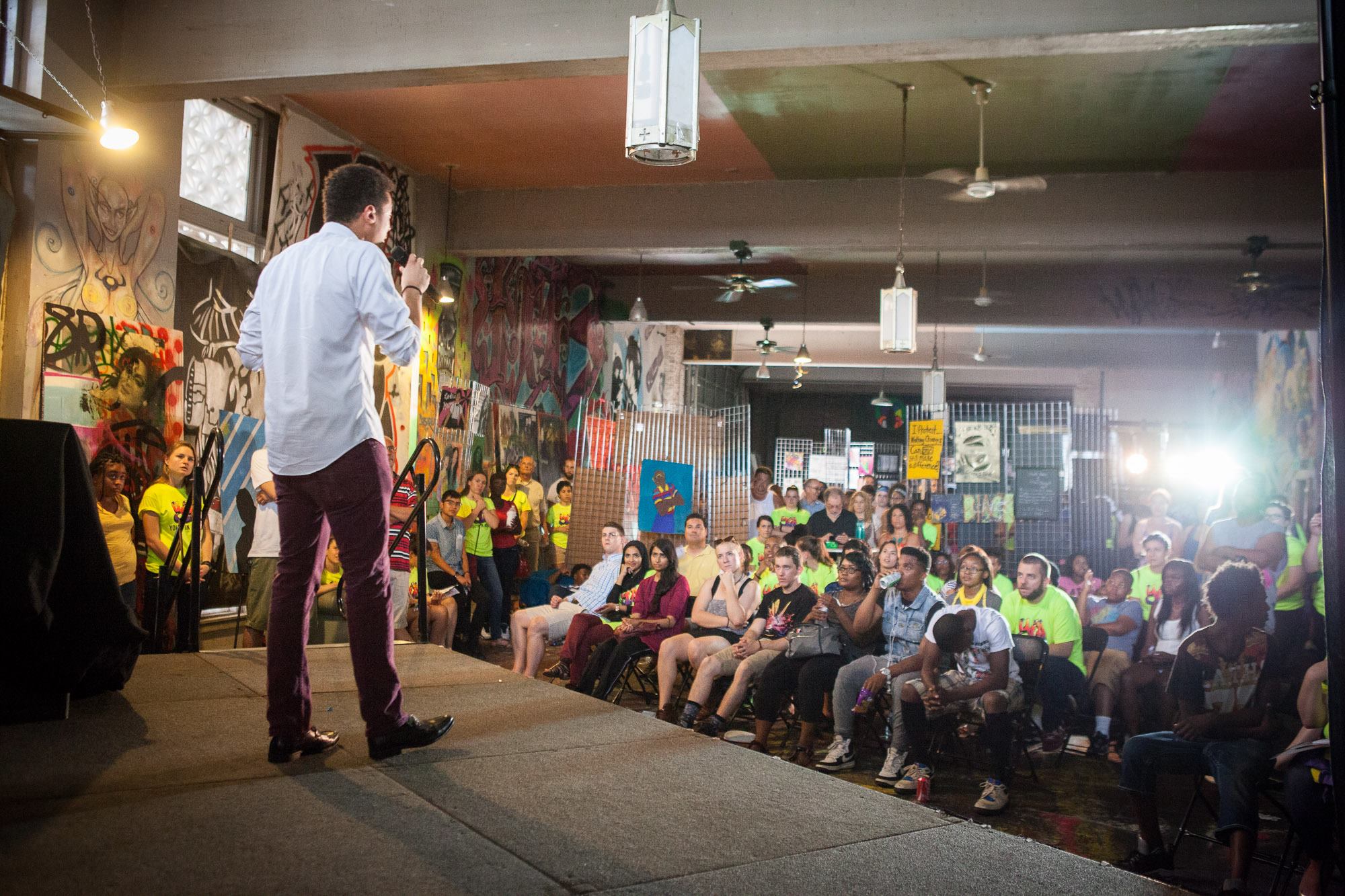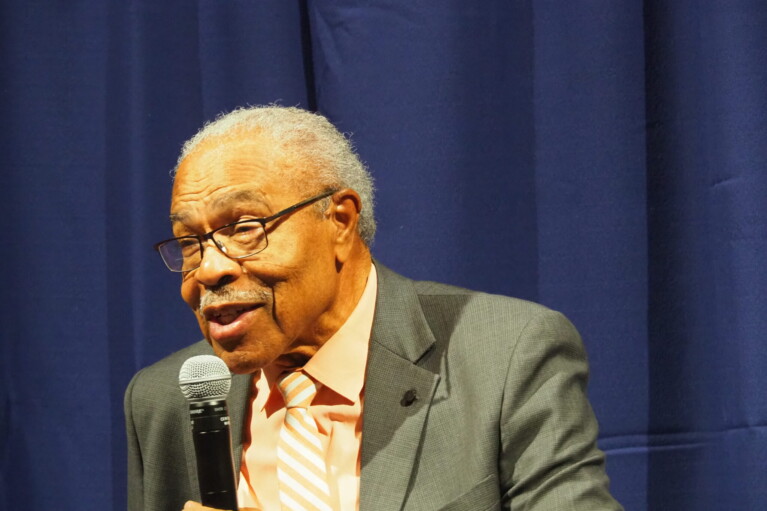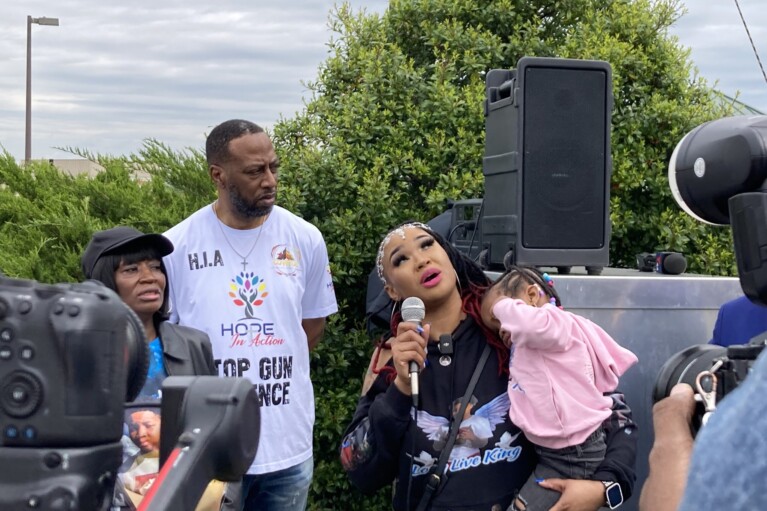
Editor’s note: With this piece, Maryland Matters and the University of Maryland Baltimore County begin a partnership on commentaries. Once a month, UMBC faculty, staff or students will provide an op-ed piece about a program, course or issue on campus and its broader relevance to the state.
By Dr. Kelly Quinn and Eric N. Ford
Quinn is the deputy director of The Choice Program at the University of Maryland Baltimore County and senior administrator of programming, advocacy and social enterprises. Ford is the executive director of The Shriver Center at UMBC and oversees the implementation of community-based service programs.
We believe that with proper support and resources, all youth have the ability to succeed. Yet, amid a spike in carjackings nationwide and corporate media stories about smash and grab theft, everyday people and elected officials are focused on how to prevent violence and punish youth, pushing the conversation into a call-and-response panic, instead of looking at the data to guide decisions. Evidence has demonstrated that most young people age out of criminal behavior. Successful interventions are community-based.
The Choice Program at UMBC does just this in Baltimore City, and in Baltimore, Howard, Prince George’s, and Montgomery counties. Since 1988, Choice has benefited from an institutional home at UMBC, and is an example of strong interagency cooperation between the Maryland Department of Juvenile Services (DJS) and University System of Maryland (USM).
We are the only university-based, youth diversion program in the state. Our intervention model is evidence-informed, rooted in anti-racism, positive youth development, and trauma responsiveness. And we are so proud to say that 99% of our youth did not receive a new charge in fiscal year 2023.
Our program meets young people and families in their homes and communities to provide mentoring and case management for 10-19 year olds who are involved with DJS. Additionally, we provide supported employment for 14-24 year olds at our social enterprises: University of Baltimore School of Law, Oriole Park at Camden Yards, and in the Inner Harbor. We have worked with 27,000 youth and families during more than 35 years in service to Maryland.
When a DJS case manager refers a young person to us, we pair them with a service coordinator, a mentor. Mentors conduct welcome meetings in youth’s homes with their parents or guardians. They assess needs and develop a service plan based on SMART goals. Step by step, mentors coach young people on tasks that are specific, measurable, actionable, relevant, and time-bound.
One goal must be to fulfill obligations of DJS and the courts. Mentors see to it that young people write apology letters or pay restitution, for example. Most youth need to complete community service hours either to meet conditions for DJS or high school graduation. Last year, Choice youth completed more than 1,700 hours with their mentors. Importantly, in our model, young people identify personal goals such as obtaining a learner’s permit or making the cheerleading team.
During their time with Choice, mentors may refer young people to therapy or family counseling. They may advocate with families and educators to establish specialized support plans and accommodations in schools. And, they may accompany participants to court hearings. Staff mentors work closely with DJS case managers to support young people for a three or six month tenure.
As we aim to dismantle the school to prison pipeline, we seek to demystify higher education. We take advantage of our institutional home on a university campus. During the academic year, UMBC and Loyola University students host College Nights.
For many Choice youth, this is their first time on a college campus. Undergraduates, mentors, and youth share a meal in the dining hall, collaborate on an enrichment and educational project, and enjoy an outing to campus the recreation center. They learn from each other.
We know that joy is also important for healthy youth development. This past summer, mentors and youth rode roller coasters at Six Flags, hiked in Patapsco Valley State Park, and learned about the quiet pleasures of birdwatching along Herring Run.
And we think that art is a key mode for self-expression and emotional regulation. Our Youth in Action series includes workshops in self-care, poetry, and drawing. For more than 10 years, Choice young people have spent their spring breaks making tile mosaics; one hangs in Baltimore City Juvenile Justice Center, another in Baltimore Police headquarters.
We maintain community repair and wellbeing depends on a vision of public safety that rejects the impulse to punish with prison, and calls upon our communities to provide supportive services to our youth, rather than demonization. By joining together, we can ensure that young people reach their goals. Our future is in their hands.




 Creative Commons Attribution
Creative Commons Attribution